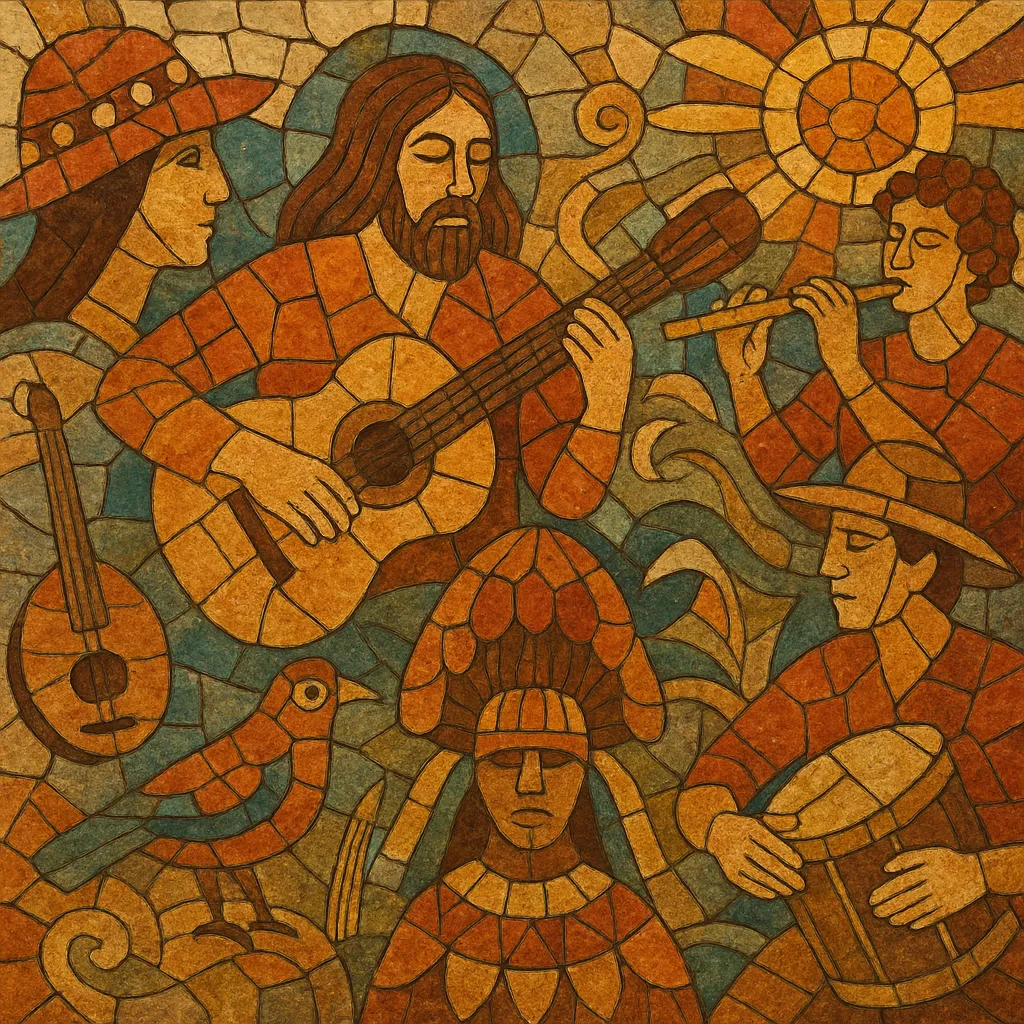Udigrudi (a Brazilian phonetic take on “underground”) is a 1970s countercultural music scene centered in Recife/Olinda, Pernambuco, that blended Northeastern Brazilian folk rhythms with psychedelic rock, progressive experiments, and acoustic pastoralism.
Defined by a fiercely DIY ethos, small independent pressings (often at the Rozenblit studio/plant), and a communal creative spirit, the music merges maracatu, baião, frevo, coco, and forró with fuzzed guitars, modal acoustic jams, flutes/pífanos, rabeca, and spacious tape-echo reverbs. Lyrics frequently evoke regional imagery, mysticism, and surrealism, giving the records a trippy, rustic, and distinctly Pernambucan identity.
The term “udigrudi” emerged in Pernambuco in the early–mid 1970s to describe a local underground art/music current. It took the boundary-pushing spirit of Tropicália and localized it in the Northeast, drawing deep from regional rhythms (maracatu, baião, frevo, coco, forró) while absorbing psychedelic rock and progressive experimentation. The scene’s material conditions—limited budgets, independent production, and the presence of the Recife-based Rozenblit pressing plant—shaped its DIY character.
Between roughly 1973 and 1976, a cluster of now-cult records appeared: Satwa (Lula Côrtes & Lailson), No Sub-Reino dos Metazoários (Marconi Notaro), Ave Sangria’s self-titled LP, Flaviola e o Bando do Sol, and the mythic Paêbirú (Lula Côrtes & Zé Ramalho). These albums fused modal acoustic pieces, electric psychedelia, Northeastern percussion, pífano/rabeca colors, and exploratory studio treatments. Though circulation was small, the music documented a uniquely Pernambucan psychedelic language—rustic, trance-like, and regionally rooted.
For decades many titles were scarce—some lost in small runs and poor distribution. From the 1990s onward, collectors, reissue labels, and online communities sparked a reappraisal, bringing global attention to Pernambuco’s 1970s underground and revealing its breadth beyond a few legendary titles.
Udigrudi’s blend of maracatu/forró DNA with electric psychedelia foreshadowed and informed later Pernambuco movements, most visibly Manguebeat in the 1990s. Its aesthetics—regional grooves, experimental studio play, and countercultural independence—continue to color Brazilian neo-psychedelia and indie folk, ensuring the movement’s long-tail influence well beyond its initial small pressings.


